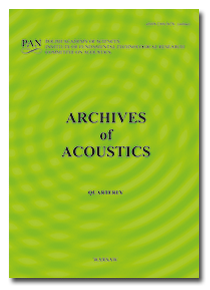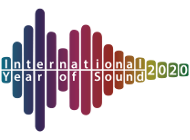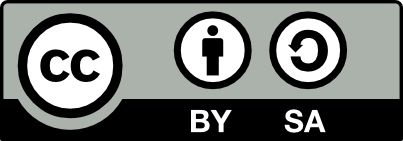10.24425/aoa.2022.142008
Impact of Wall Impedance Phase Angle on Indoor Sound Field and Reverberation Parameters Derived from Room Impulse Response
References
Aretz M., Dietrich P., Vorländer M. (2014), Application of the mirror source method for low frequency sound prediction in rectangular rooms, Acta Acustica united with Acustica, 100(2): 306–319, doi: 10.3813/AAA.918710.
Collins P.J. (2006), Differential and Integral Equations, Oxford University Press, New York.
Cox T., D’Antonio P. (2009), Acoustic Absorbers and Diffusers: Theory, Design, and Application, 2nd ed., Taylor & Francis, New York, doi: 10.4324/9781482266412.
Damelin S.B., Miller W. Jr (2012), The Mathematics of Signal Processing, Cambridge University Press, New York.
Dance S., Van Buuren G. (2013), Effects of damping on the low-frequency acoustics of listening rooms based on an analytical model, Journal of Sound and Vibration, 332(25): 6891–6904, doi: 10.1016/j.jsv.2013.07.011.
Hak C.C.J.M., Wenmaekers R.H.H.C., van Luxemburg L.C.J. (2012), Measuring room impulse responses: impact of the decay range on derived room acoustic parameters, Acta Acustica united with Acustica, 98(6): 907–915, doi: 10.3813/AAA.918574.
Hunt F.V., Beranek L.L., Maa D.Y. (1939), Analysis of sound decay in rectangular rooms, The Journal of the Acoustical Society of America, 11(1): 80–94, doi: 10.1121/1.1916010.
Jeong C.-H. (2012), Absorption and impedance boundary conditions for phased geometrical acoustics methods, The Journal of the Acoustical Society of America, 132(4): 2347–2358, doi: 10.1121/1.4740494.
Jeong C.-H., Lee D., Santurette S., Ih J.-G. (2014), Influence of impedance phase angle on sound pressures and reverberation times in a rectangular room, The Journal of the Acoustical Society of America, 135(2): 712–723, doi: 10.1121/1.4861839.
Kuttruff H. (2009), Room Acoustics, 5th ed., Spon Press, New York.
Long M. (2014), Architectural Acoustics, 2nd ed., Elsevier Academic Press, New York.
Maa D.-Y. (1939), Distribution of eigentones in a rectangular chamber at low frequency range, The Journal of the Acoustical Society of America, 10(3): 235–238, doi: 10.1121/1.1915981.
Meissner M. (2008), Influence of wall absorption on low-frequency dependence of reverberation time in room of irregular shape, Applied Acoustics, 69(7): 583–590, doi: 10.1016/j.apacoust.2007.02.004.
Meissner M. (2017), Acoustics of small rectangular rooms: Analytical and numerical determination of reverberation parameters, Applied Acoustics, 120: 111–119, doi: 10.1016/j.apacoust.2017.01.020.
Meissner M. (2019), Prediction of low-frequency sound field in rooms with complex-valued boundary conditions on walls, Vibrations in Physical Systems, 30(1): 2019127.
Meissner M. (2021), Application of modal expansion method for sound prediction in enclosed spaces subjected to boundary excitation, Journal of Sound and Vibration, 500: 116041, doi: 10.1016/j.jsv.2021.116041.
Meissner M., Wisniewski K. (2020), Investigation of damping effects on low-frequency steady-state acoustical behaviour of coupled spaces, Royal Society Open Science, 7(8): 200514, doi: 10.1098/rsos.200514.
Meissner M., Zielinski T.G. (2020), Low-frequency prediction of steady-state room response for different configurations of designed absorbing materials on room walls, [in:] Proceedings of the 29th International Conference on Noise and Vibration Engineering (ISMA 2020) and the 8th International Conference on Uncertainty in Structural Dynamics (USD 2020), pp. 463–477.
Murphy D.T, Southern A., Savioja L. (2014), Source excitation strategies for obtaining impulse responses in finite difference time domain room acoustics simulation, Applied Acoustics, 82: 6–14, doi: 10.1016/j.apacoust.2014.02.010.
Navarro J.M., Escolano J. (2015), Simulation of building indoor acoustics using an acoustic diffusion equation model, Journal of Building Performance Simulation, 8(1): 3–14, doi: 10.1080/19401493.2013.850534.
Nolan M., Davy J.L. (2019), Two definitions of the inner product of modes and their use in calculating non-diffuse reverberant sound fields, The Journal of the Acoustical Society of America, 145(6): 3330–3340, doi: 10.1121/1.5109662.
Predka E., Branski A. (2020), Analysis of the room acoustics with impedance boundary conditions in the full range of acoustic frequencies, Archives of Acoustics, 45(1): 85–92, doi: 10.24425/aoa.2020.132484.
Prislan R., Veble G., Svenšek D. (2016), Raytrace modeling of acoustic Green’s function based on the semiclassical (eikonal) approximation, The Journal of the Acoustical Society of America, 140(4): 2695–2702, doi: 10.1121/1.4964295.
Schroeder M.R. (1965), New method of measuring reverberation time, The Journal of the Acoustical Society of America, 37(3): 409–412, doi: 10.1121/1.1909343.
Suh J.S., Nelson P.A. (1999), Measurement of transient response of rooms and comparison with geometrical acoustic models, The Journal of the Acoustical Society of America, 105(4): 2304–2317, doi: 10.1121/1.426837.
Summers J.E. (2012), Accounting for delay of energy transfer between coupled rooms in statistical-acoustics models of reverberant-energy decay, The Journal of the Acoustical Society of America, 132(2): 129–134, doi: 10.1121/1.4734591.
Szemela K., Rdzanek W. (2022), The influence of an impedance obstacle on the acoustic field inside a rectangular room, Journal of Vibration and Acoustics, 144(2): 021005, doi: 10.1115/1.4051587.
Winkler-Skalna A., Nowoswiat A. (2021), Use of n-perturbation interval ray tracing method in predicting acoustic field distribution, Applied Mathematical Modelling, 93: 426–442, doi: 10.1016/j.apm.2020.12.028.
Yasuda Y., Saito K., Sekine H. (2020), Effects of the convergence tolerance of iterative methods used in the boundary element method on the calculation results of sound fields in rooms, Applied Acoustics, 157: 106997, doi: 10.1016/j.apacoust.2019.08.003.
Yokota T., Sakamoto S., Tachibana H. (2002), Visualization of sound propagation and scattering in rooms, Acoustical Science and Technology, 23(1): 40– 46, doi: 10.1250/ast.23.40.
Yoshida T., Okuzono T., Sakagami K. (2020), Time domain room acoustic solver with fourth-order explicit FEM using modified time integration, Applied Sciences, 10(11): 3750, doi: 10.3390/app10113750.
DOI: 10.24425/aoa.2022.142008






